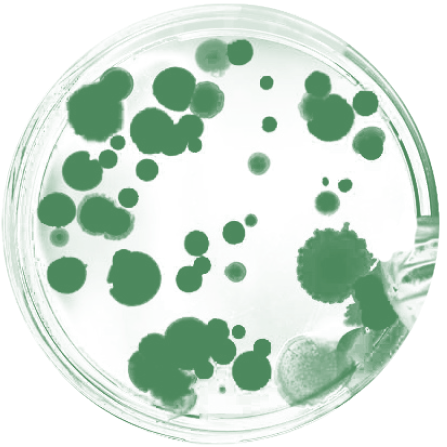-

Future
Venice
Since 2009, designer Rachel Armstrong, in collaboration with architects Neil Spiller and Christian Kerrigan and chemists Martin Hanczyc and Hans Toftlund, has been working on an ongoing project to grow a natural barrier to protect the buildings of Venice.
Venice is a site of entanglement between human settlement and the natural world. The city exists only through an intimate relationship with technology – from allying itself, a thousand years ago, to advanced agrarian techniques for digging canals, draining land and piling foundations, to the large-scale industrial engineering of projects like MOSE today, in which a series of 78 mechanically operated gates are being installed that intend to hold back the destructive high tides that increasingly chew at the city’s fabric.
If Venice could grow its own natural barrier against rising water levels‚ would we still need to save it by mechanical means? (Image courtesy GMJ)
-
Rachel Armstrong has been developing Future Venice since 2009 in collaboration with Neil Spiller, Martin Hanczyc and Hans Toftlund, with drawings produced in conjunction with Christian Kerrigan and GMJ. The project proposes how protocell technology could be deployed across different scales of operation. Ultimately this is not just a speculative proposition, but has been supported by early field tests.
The first series of experiments were conducted courtesy of Davide De Lucrezia at Biotech Explora in Marghera Science Park, Italy, in collaboration with Martin Hanczyc. The technological design principles and conditions for producing a mineral shell around an oil droplet using lagoon water were explored, and an oil droplet in a water system was selected as the vehicle for a mineralising metabolism. Further preparations of this experiment have also been prepared using olive and canola oils. Their efficacy has been tested in the field in tanks around the Venetian lagoonside with architecture students from the University of Venice, in collaboration with Red Bull.
Yet since the Industrial Revolution, machines have also heavily contributed to the pollution of Venice’s lagoon and the draining of its aquifers. Environmentalists are concerned that intermittent backlogging of water will cause irreversible damage to the lagoon’s ecology.
Armstrong and co.’s Future Venice project proposes a new tactic, using “protocell” technology that could enable the city to engage in a struggle for survival against the elements in a manner akin to a living organism, rather than through mechanical means. Protocells are not technically living organisms (they have no DNA), but possess strikingly life-like properties: self-directed movement, sensitivity, population-scale behaviour and the ability to synthesise materials.The Future Venice model system uses protocells to grow barnacle-like accretion structures from the dissolved minerals and carbon dioxide of Venice’s lagoon water. This process, tested via laboratory and field work, would help spread the point load of the city by growing mineral islands under its woodpile foundations, slowing its sinking.
Rather than damming rising water with a machinic gate solution, implementing this type of technology around damaged buildings in Venice would structurally repair their foundations through an organised version of a process that already occurs naturally but haphazardly. It could even lead to the growth of an artificial limestone reef under the city, creating a new marine ecology.
Mineral accretion is not a complete solution to Venice’s many urban and environmental challenges, but it opens up new possibilities for co-designed and shared futures with the natural world. IMineral accretion technology could mimic a natural process already occurring in Venice′s waters‚ but in an articulated and organised way. (Photo: Rachel Armstrong)
-
Search
-
FIND PRODUCTS
PRODUCT GROUP
- Building Materials
- Building Panels
- Building technology
- Façade
- Fittings
- Heating, Cooling, Ventilation
- Interior
- Roof
- Sanitary facilities
MANUFACTURER
- 3A Composites
- Alape
- Armstrong
- Caparol
- Eternit
- FSB
- Gira
- Hagemeister
- JUNG
- Kaldewei
- Lamberts
- Leicht
- Solarlux
- Steininger Designers
- Stiebel Eltron
- Velux
- Warema
- Wilkhahn
-
Follow Us
Tumblr
New and existing Tumblr users can connect with uncube and share our visual diary.
»What the map cuts up, the story cuts across.«
Michel de Certeau: Spatial Stories
Keyboard Shortcuts
- Supermenu
- Skip Articles
- Turn Pages
- Contents


